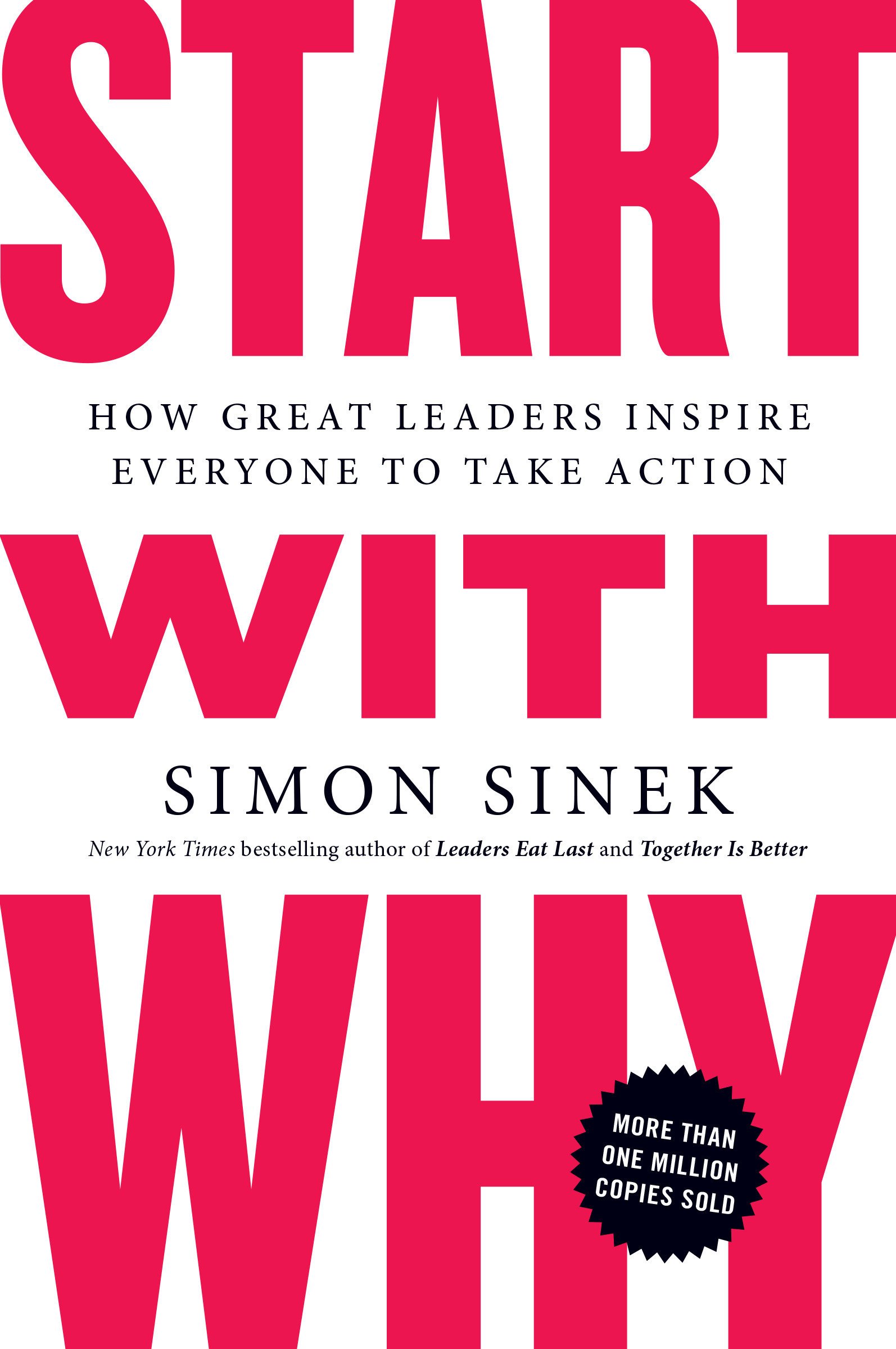
Notes on
Start With Why
by Simon Sinek
• 5 min read
Introduction
Everyone can learn to lead.
This book isn’t practical, but tells you for which reasons (why) you should aim to inspire and lead.
Part 1: A World That Doesn’t Start With Why
Assume You Know
We act on what we think we know.
No matter your goal, how we go by achieving them is done similarly. Some people try and improvise along the way, but most start with gathering data / information. That’s because we want to make the right decisions.
Even when we are right, it wasn’t always because we made the right decision - maybe we got lucky.
Take for example someone who invests their money (or day trades). When that person earns money, they’ll say it’s because of their superior knowledge and ability to pick good stocks. But when they lose money, it’s because of the damn market. Here is the thing. It can’t be both. Either you win and lose because of your skill, or you win and lose because of the market.
But how can we make sure that we make the decisions that give us the best possible outcome for reasons that we fully control? Logic would say that information gathering is key. The more you know, the better decisions you make. But be careful of what you think you know, because sometime it doesn’t go the way we want it to. The assumptions we make can lead us astray, even if our research was sound.
And sometimes, when we just wing it, things go well.
So how do we make it so that we make the best possible decisions, that gives the best possible outcome, and that can be repeated as much as desired?
If you don’t reach your desired outcome, then it’s because of a decision made at the start of the process.
Don’t treat the symptom, treat the root cause. We usually fix things by using short-term solutions, instead of fixing the whole process ( a long term solution ).
Carrots and Sticks
Manipulation vs Inspiration
So many companies don’t know why people come to them. They manipulate ‘customers’ to purchase their items, but do not inspire them to do so.
Price
Price is effective manipulation. Deals, 50% off, etc. It’s like a drug. When you start lowering your prices and sales go up, it’s hard to stop - and the customers don’t want to stop either.
It works… for a while. But how long is it possible to stay profitable playing the price game? Lowering the prices → the competition lowers their prices → repeat.
Promotions
2 for 1 and so on. General Motors tried cash back, but it bled them dry.
Fear
When fear is employed, facts are incidental. Emotions can’t be wiped away with facts.
Aspirations
“Six steps to a happier life”
Peer Pressure
Self explanatory
Novelty (a.k.a innovation)
Companies try to create new novelty features to differentiate themselves from the competition, and it works - sales go up. For a while. Then it starts dropping again.
Colgate went from 2 to 32 different toothpastes.
Every mobile phone company takes orders from providers in terms of which features their phones should have - but not Apple. Apple is good. Apple reinvented the way you do things in the industry.
It’s not truly good innovation unless it reinvents your entire industry.
The Price You Pay For The Money You Make
All of the above are manipulations, and they work only in the short term.
Manipulations Leads to Transactions, not Loyalty
These strategies work if you’re just looking for one-off transactions. But the feeling of “we’re in this together” for when you breed loyalty? Nothing comes closer.
Just Because It Works Doesn’t Make It Right
Part 2: An Alternative Perspective
The Golden Circle
People don’t buy WHAT you do. They buy WHY you do it. Your how and what can always be stolen by competitors, but not your WHY.
Ask WHY you started doing what you are doing, and HOW you can bring your WHY to life in your products / services.
This is Not Opinion, This is Biology.
People want to connect with those two share their beliefs.
Great leaders and organizations see things that others don’t. They give us things we didn’t know we wanted.
Clarity, Discipline, and Consistency.
Clarity of WHY, discipline of HOW, and consistency of WHAT.
You can’t just use nouns as your how. “Innovation. Honesty. Integrity”.
You need to: “integrity” = “always do the right thing”. “Innovation” = “look at things from a different angle”.
Nouns are not actionable.
A WHY is just a belief. HOWs are the actions you take to realize that belief. And WHATs are the result of those actions - everything you say and do: your products, services, marketing, PR, culture, and whom you hire.
You’d want to be more authentic, but you can’t just ‘be’ more authentic. You can’t just tell someone in your team to be more authentic. You can’t just ask your customer what you have to do to be authentic. Being authentic means you already know.
When you actually believe in the product you are selling, you are authentic.
Part 3: Leaders Need a Following
The Emergency of Trust
Hire People who believe what you believe. Who believe in the company’s why.
Liked these notes? Join the newsletter.
Get notified whenever I post new notes.